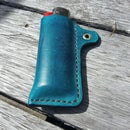Introduction: Make an Arrow Pendant From an Old Saw Blade
A dull sawblade (table saw, mitre saw, etc.) is still a perfectly good piece of metal. We throw away an insane amount of materials because they are no longer fit for their designed purpose. This doesn't mean you can't make them into something else! In this instructable, I'll go through the stages of making an arrow pendant from an old saw blade.
Let's go! ▶
Supplies
Note: the supplies for this project is to some degree based on personal preference, both in terms of finishing it and the tools you use, so if you skim and see something you don't have, it's likely that you can substitute it for something else.
- A discarded/dull saw blade from a table saw, miter saw, chop saw etc.
- Angle grinder with a cutting disc OR a Dremel with cutting blades and sanding attachments OR a hacksaw (your choice here will depend on a few things, including availability and the state of your hands/wrists)
- Sawhorse/other work surface to clamp to
- Eye and ear protection
- A couple of metal files (you can do this project without these)
- Metal drill bit and a vice OR diamond and carving Dremel bits
- Sandpaper grits 80, 120, 180, 220, 320, 400, 600, 800, 1200, 2000, 3000, to 5000 (up to 2000 will also be fine)
- Meta polish (Autosol, tripoli paste, Silvo, Braso)
- Leather strip and waxed cord OR your choice of chain
Step 1: Cut Out Your Shape
First, find the shape you want your pendant to be. The type of chord/chain you will be using and how you will attach it to the pendant may dictate this to some degree. I found a free template searching Google images and printed it about twice the size I wanted my final pendant to be (I used an angle grinder to cut the initial shape out of the blade; the extra size here helps with material loss and subsequent filing/sanding).
Print your shape, cut it out and paste it to the saw blade. I had a smaller piece of blade from a previous project but you can just go ahead and use the full blade. I used spray-on adhesive for the template, then clamped the blade to my sawhorse. Before using the angle grinder, I used the Dremel with a metal cutting disc to score the borders of the template. This makes it easier to control the angle grinder around the template border.
If you are using an angle grinder, you can now cut out the template. Go slowly. Make sure you wear eye and ear protection. Sparking in your eyes is not a great time and can damage them. A blade that breaks and flicks back into your face is even worse so make sure you are using the guard on the grinder and that it is positioned correctly. You can also use a hacksaw with a sharp blade or the Dremel but the latter will take significantly longer. I used an angle grinder because I have carpal tunnel and the process was super quick.
Step 2: Refine Your Shape
If you are using metal files, these are great to begin shaping your pendant into the basic shape you want it to be. The files will help you to put down clean and straight lines, but will also make establishing slight curving and sloping easy. Put the template in a vice, clamp it down (if you're using a drill-press vice like I did), put on a podcast, and start filing! Once you are at a point where you are happy with your shape, take it out of the vice and admire it. Pretty.
Note: You can also use the millions of Dremel grinding bits available in this process.
Step 3: Sanding and Polishing
NOTE: If you are like me and you sometimes don't do things in the order they should be done, you'll now be polishing the pendant. Please don't do this! Skip to the step for drilling the hole in the pendant, then come back here. I'll see you soon.
You can absolutely hand sand the pendant but, again, I used a Dremel to spare my wrists and fingers. Dremel has a variety of bits that you can use for this; I used primarily the ones shown in the images here and worked my way through 80, 120, 180, 220, 320, 400, 600, 800, 1200, 2000, 3000, to 5000. The higher you go on the grits, the more polished your final pendant will be. Make sure you remove as many scratches as possible using each of the grits. I recommend, again, a podcast while doing this.
Step 4: Creating a Hole for Hanging the Pendant
I hope you took my advice and skipped here before doing step 3 because otherwise, you're going to have to repeat the polishing step. Warned you.
Clamp your pendant down and using a marker, indicate where on the pendant you want to create the hole/slot for your leather strap/pendant chain. You can put the pendant in a drill press vice and use metal drill bits to drill a hole, but I don't have metal drill bits, so I used a variety of Dremel carving/diamond bits to do this. Go slowly because it's delicate work. It took me about 30 minutes to get through to the other side. I used very thin, straight diamond bits do work down the edges once I was through to remove any sharp edges around the hole but you can also wrap sandpaper around a kebab skewer and sand the edges down this way.
Finally, give the pendant a good buff with a metal polish (I used Autosol).
Step 5: Adding the Leather Strap/chain
The final step will come down to personal preference. Because I work with leather, I have it on hand. I also like the feel of it. Because I'm fickle I changed my mind from the original raw veg tan color to brown. I simply pulled through the leather strap, then used some leather threading to bind the strap down tightly. Waxed cord is useful because instead of making knots, you can burn down the edge with a lighter to 'seal' it.
You can, of course, also use a number of jewelry findings such as a small ring/loop to attach your chain of choice.
And that is it, you're done! If you enjoyed the process of making your pendant, remember that you still have a huge piece of metal left from the blade that you can make more from. Reuse and recycle. Have fun!

Participated in the
Jewelry Contest













